The Standard Italian Language, or more simply Italian, is the official language of Italy. It is spoken by approximately 70 million people who mostly reside on the Mediterranean Peninsula or its islands such as Sicily and Sardinia.
However, it is also used in the southern areas of Switzerland – specifically in the Ticino and Graubünden cantons – the Vatican City, San Marino, French Alps and the Côte d’Azur as well as along the west-facing borders of Slovenia and Croatia.
This linguistic entity has spread through time and space, but to become the language we know today, it underwent a long and tortuous process that dates back to ancient times, or more specifically, before the rise of the Roman Empire.
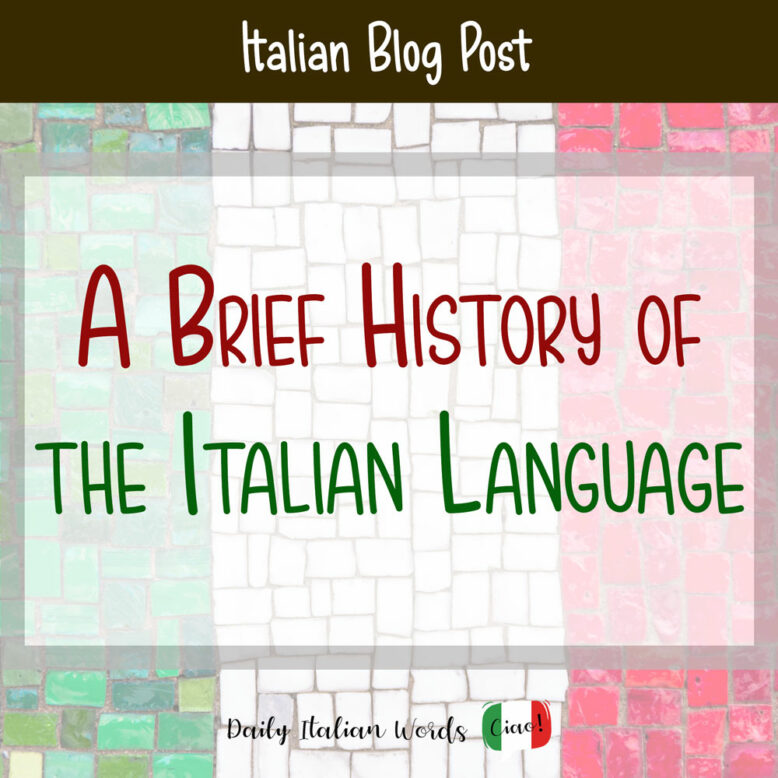
History of the Standard Italian Language
First of all, Italian is a Romance Language, coming from the Indo-European family. It is a relatively modern language and evolved mainly from previous dialects and Vulgar Latin.
There wasn’t an official spoken code spanning the entire Peninsula until poets and authors elevated the style of a particular dialect by furbishing it with a new lexicon. And before reaching this point, Italy was a complex blend of small and large communities that experienced many invasions, house rivalries and wars.
Before the Romans could conquer the whole territory, Italy was characterised by the Etruscan, Ligurian, Celtic, Oscan and Umbrian languages. The Greek language was prominent in Calabria and Apulia, both of which used it throughout the centuries until the fall of the Roman Empire.
For many years, a number of these linguistic codes survived the ascent of the Latin language, which first emerged in the 8th century BC. But slowly they disappeared as Latin became the sole language used by Romans in both everyday situations and for official documents. And so great was its influence that it spread all over the empire.
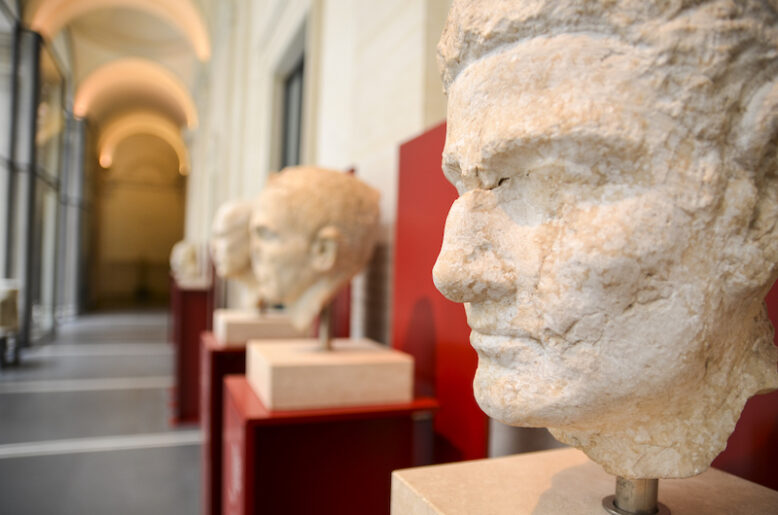
Linguistic Varieties in Roman Times
A handful languages survived during the era of the Romans. However, all but Celtic and Greek, which persisted until the decline of the empire, soon entered an extinction process which saw them slowly fade away. Sadly, there aren’t many traces of these communities after the 5th century AD.
The Romans, however, established their domain and adopted classical Latin for literary and ecclesiastical ends. Vulgar Latin became the spoken language of the destitute classes, common people and less educated.
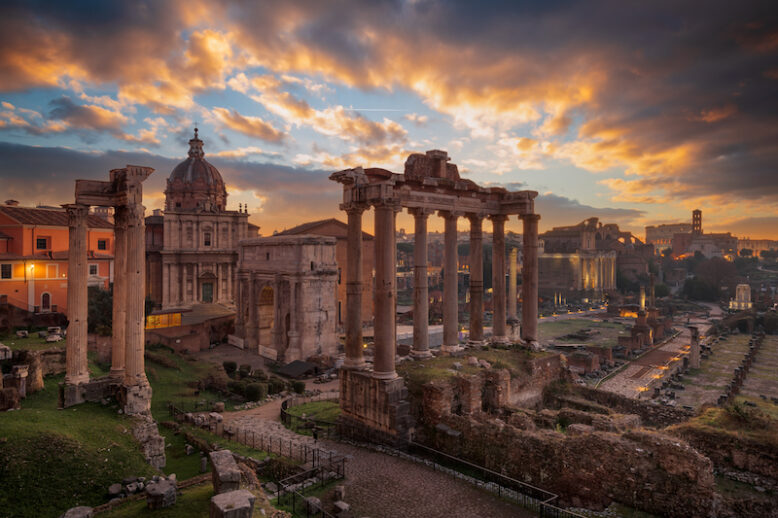
The Latin language is still used today in the Vatican City, and it serves scientists for the scientific classification of living beings. Moreover, it has been adopted in various technical fields, medical terminology and taxonomy.
For more than four centuries, Latin permeated every corner of the Peninsula, allowing the Romans to impose linguistic hegemony on the people. There was less and less space for linguistic minorities, most of whom were forced to embrace Latin to survive in the new world.
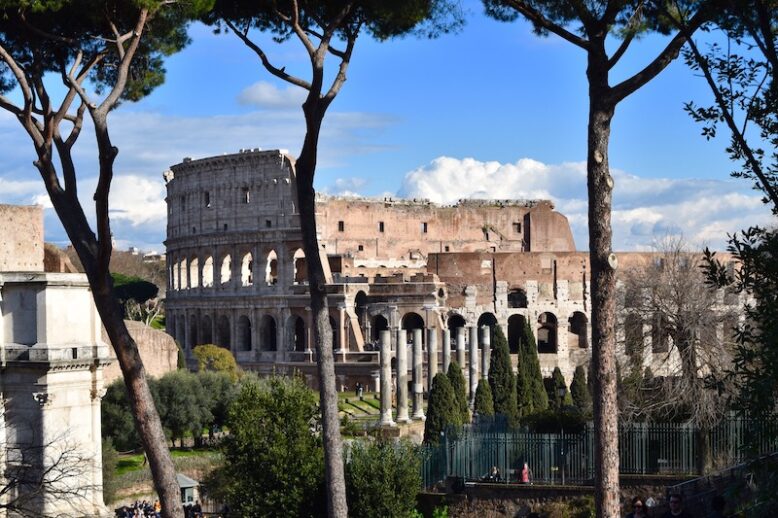
The Middle Ages and the Birth of Romance Languages
The Medieval Period was the starting point for the rise of the Italian language we know today, as well as all the other Romance languages such as Portuguese, Spanish, and French.
After the fall of the Roman Empire, and the decline of Latin in around the 9th century AD., Italy turned into a hodgepodge of scattered regional and interregional communities. But more importantly, each province switched to their preferred linguistic features, which led to the birth of numerous regional dialects.
Of all these regional dialects, Tuscan was the linguistic variant that most heavily influenced the birth of a common language.

The Founding Fathers of Italian literature and the Rise of the Italian Renaissance
This was probably the most emblematic age for the evolution of the Italian language. It started in the 13th century with lyrical poetry written in the Sicilian dialect, which later influenced the birth of the Italian literary movement Dolce Stil Novo, renowned for the rise of those who today are defined as the founding fathers of Italian literature.
Dante Alighieri wrote the Divine Comedy sometime between 1306 and 1321 AC., a masterpiece that even today is studied, read, and cherished all around the world. And Dante’s Inferno is surely the most celebrated work of the great Italian poet. He, along with Francesco Petrarch and Giovanni Boccaccio, was committed to enhancing and sculpting the Tuscan dialect.
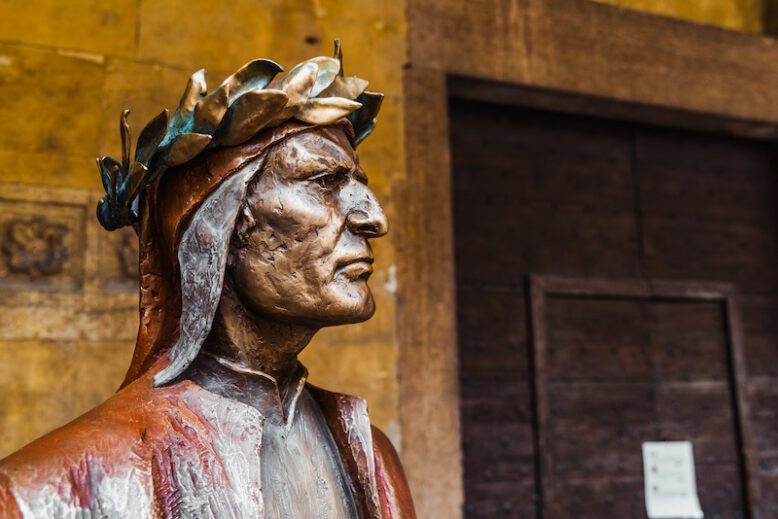
From this point in time, Italy became the central hub for artists, authors and patronage all over Europe. The vast majority of artistic and cultural movements emerged here, only later spreading to other countries. What really characterised this time in Italy was Italian literature, outstanding art and erudite scholars, all of whom enriched the courts and the peninsular cities, and afterwards, European entities too.
In the meantime, the Tuscan dialect slowly became the national language, empowered by the publication of immense masterpieces, as well as the birth of new writers, poets, and brilliant minds who celebrated this dialect in a way that nobody in the whole Peninsula had ever done before.
The other regional dialects (listed below) spread from North to South in different groups:
- Northern Italian or Gallo-Italian
- Venetan, used in North-East Italy from the Serenissima, first Republic of Venezia
- Dialects of Marche, Umbria and Rome
- Dialects of Abruzzi, Apulia, Naples, Campania and Lucania
- Linguistic variants in Calabria, Otranto, and Sicily
Despite the strong influence of the Italian language, these dialects somehow managed to survive until the present day. However, they are experiencing a decline in use and are at real risk of extinction.
Modern Italian Language
It would be impossible to discuss the consolidation of modern Italian without bringing up the intervention of two other main protagonists of literature: Pietro Bembo and Alessandro Manzoni. The Florentine linguistic variant was favoured over the others, and both the Venetian Bembo and the Milanese Manzoni, worked on its main features to lay the groundwork for a new and evolved language.
Pietro Bembo, especially in his Prose della volgar lingua, listed all the characteristics that could enter common usage in order to establish a singular and stylistic language.
Likewise, in the famous masterpiece The Betrothed (I Promessi Sposi in Italian), Alessandro Manzoni provides his characters with a language that totally forsakes the old-fashioned language of the 17th century.

This was the turning point in the development of Italian language. Not only did it undergo enormous changes with respect to ancient Latin and regional dialects, but it was also subjected to morphosyntactic, phonetic, and semantic changes, and lexical variation (even though a part of its original vocabulary remained nearly identical).
One of the main features Italian lost was the Latin cases, which were replaced by a consistent usage of articles and prepositions. The neutral genre has also disappeared in favour of the masculine one. Both these changes resulted in a more fixed and less free order for the construction of a proposition or clause. Indeed, Latin texts could have the subject at the end of a text, verbs in any position, and variations that even today complicate the lives of translators.
Italian phrases today are much shorter and easier to understand. Moreover, some of the Latin words adopted by the Italian lexicon have a different meaning owing to foreign influences and socio-cultural factors that intervened during this long-lasting evolution.
The Italian Language Worldwide
The Italian language today is going through a process of globalisation in which English vocabulary, especially work-related and technological terms, is widening the Italian lexicon.
Likewise, Italian is among the most studied languages in the world and draws much attention because of its literary and musical history and signature sound. The Italian Peninsula is fascinating for many reasons, but the language seems to be one of the top picks for foreigners.

Worldwide, small communities of Italian emigrants took the Italian language with them, even though most of these Italian speakers were conditioned by local dialects in Italy and currently speak a hybrid of that dialect and the local language.
Many Italian communities live in the USA, most of them residing in cities such as Boston and New York. According to the latest census, there are more than 17 million Italian people in the United States of America. At the same time, Venezuela, Argentina, Brazil, Canada and Australia all host communities that speak Italian dialects mixed with standard Italian.
Conclusion
Italian is a language that has reinvented itself throughout the centuries and today, despite not being among the most spoken languages in the world, it holds a special place in the hearts of those who speak and study it. The future looks bright for this linguistic entity, born from more than 2000 years of mutations, upheavals, regional conflict, and most importantly, from the will of poets and literary geniuses to create a uniquely stylistic language with the ability to “enchant, charm and beguile”.
About the author: Fabio Guarino
As a Linguist and Language Specialist, working as a Freelance Content Writer and SEO Marketer allows me to combine my passions and interests with my career. My favourite thing about working with languages is playing with words. And this is something I’ve always dreamed about since I started to wander the globe and study languages.

Fabio Guarino is a Linguist and Language Specialist who operates as a Freelance Content Writer and SEO Marketer. He considers himself fortunate to be able to blend his passion for his native language, Italian, along with English and Spanish, with his career.


